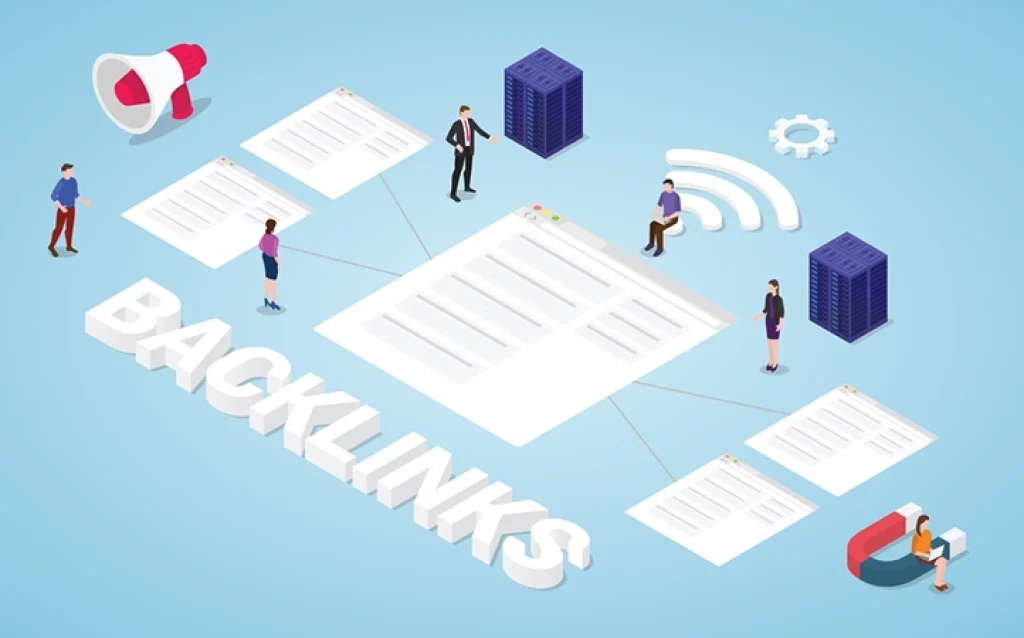Spammy links are low-quality, manipulative backlinks that violate search engine guidelines and can harm your website’s rankings. They come from irrelevant or suspicious sources and often use unnatural anchor text patterns. Identifying these harmful links protects your site from Google penalties and maintains your organic search visibility.
What exactly are spammy links and why should you worry about them?
Spammy links are backlinks that violate search engine quality guidelines through manipulative practices, irrelevant sources, or artificial link schemes. Unlike quality backlinks that come from relevant, authoritative websites and provide genuine value to users, spammy links are created primarily to manipulate search rankings rather than offer useful information.
These harmful links typically originate from link farms, private blog networks, or irrelevant websites that exist solely to sell links. They often feature over-optimised anchor text, appear in comment sections of unrelated sites, or come from directories with no editorial standards.
You should worry about spammy links because Google’s algorithms actively penalise websites with unnatural link profiles. The search engine can impose manual actions that drastically reduce your organic visibility, or algorithmic penalties that gradually erode your rankings. Recovery from these penalties requires significant time and effort, making prevention far more valuable than cure.
Even if penalties don’t occur immediately, spammy links dilute your overall link authority and can trigger closer scrutiny from search engines. This puts your entire SEO strategy at risk, potentially undoing months or years of legitimate optimisation work.
What are the biggest red flags that indicate a link is spammy?
The most obvious red flags include exact-match anchor text overuse, links from completely irrelevant websites, and placement in low-quality content areas like comment sections or footers. These patterns immediately signal manipulative intent to search engines.
Suspicious anchor text patterns represent the clearest warning sign. When multiple links use identical commercial keywords like “best SEO services” or “cheap insurance,” this indicates artificial link building. Natural links typically use varied anchor text including brand names, generic terms, and partial matches.
Low-quality source websites display several characteristics: thin content with obvious keyword stuffing, excessive outbound links on single pages, foreign language content unrelated to your niche, or sites that exist primarily to sell links. These sources provide no genuine value to users.
Irrelevant content contexts also signal spam. Links appearing in unrelated articles, random directory listings without proper categorisation, or automated content generated specifically for link placement all indicate manipulative practices.
Additional warning signs include sudden link velocity spikes, links from penalised domains, identical link placement across multiple sites, and links that redirect through suspicious URLs or cloaking techniques.
How do you use tools to detect spammy links pointing to your site?
Google Search Console provides the most authoritative view of your backlink profile through its Links report. This free tool shows which sites link to yours and highlights patterns that might concern search engines.
Start by accessing the Links section in Search Console and downloading your complete backlink data. Sort links by linking domains and anchor text to identify suspicious patterns. Look for domains you don’t recognise, unusual anchor text concentrations, or sudden increases in linking activity.
Third-party SEO tools like Ahrefs, SEMrush, or Moz provide additional analysis capabilities. These platforms offer spam scores, link quality metrics, and historical data that help identify problematic links. They can flag domains with high spam indicators or show linking patterns that suggest manipulation.
Manual analysis involves visiting linking domains directly to assess their quality. Check for thin content, excessive advertising, irrelevant topics, or obvious link selling. This hands-on approach often reveals spam that automated tools might miss.
Regular monitoring prevents problems from escalating. Set up monthly reviews of new backlinks and investigate any unusual activity immediately. This proactive approach allows you to address issues before they impact your rankings significantly.
What’s the difference between naturally low-quality links and actual spam?
Naturally low-quality links come from legitimate websites with poor content or low authority, while actual spam links are created deliberately to manipulate search rankings through artificial schemes or violations of search engine guidelines.
Natural low-quality links might originate from small blogs, local directories, or genuine websites that simply lack authority or relevance. These links typically won’t harm your site because they reflect organic linking patterns, even if they don’t provide significant value.
Context and intent separate the two categories. Natural links appear because someone genuinely found your content useful, even if their website isn’t particularly strong. Spam links exist solely for ranking manipulation, often purchased or created through automated systems.
Actual spam involves deliberate violations: paying for links, participating in link schemes, using private blog networks, or creating artificial linking patterns. These activities directly contradict search engine guidelines and carry penalty risks.
The key difference lies in authenticity. Natural links, regardless of quality, represent genuine user behaviour and editorial choices. Spam links are manufactured specifically to game search algorithms, making them fundamentally different in both purpose and potential consequences.
When evaluating questionable links, consider whether they could have occurred naturally through normal content discovery and sharing. This perspective helps distinguish between harmless low-quality links and potentially dangerous spam.
How do you evaluate the source website to determine link quality?
Evaluating source websites requires examining multiple factors including content quality, topical relevance, user experience, and overall trustworthiness signals that indicate whether a linking domain adds value to your link profile.
Content quality assessment involves checking for original, well-written articles that serve genuine user needs. High-quality sources publish comprehensive content with proper grammar, logical structure, and clear expertise in their subject matter. Avoid sites with thin content, obvious keyword stuffing, or articles that provide little actual value.
Topical relevance matters significantly for link value. Links from websites in related industries or complementary niches carry more weight than completely unrelated sources. A link from a marketing blog to an SEO tool makes sense, while a link from a pet food site to financial services appears suspicious.
User experience indicators include professional design, fast loading speeds, easy navigation, and mobile responsiveness. Legitimate websites invest in user experience because they serve real audiences. Sites that look outdated, load slowly, or display excessive advertising often prioritise link selling over user value.
Trust signals encompass author information, contact details, privacy policies, and social media presence. Credible websites typically display clear ownership, provide multiple contact methods, and maintain active social profiles. Missing or fake trust signals suggest the site exists primarily for link manipulation.
Technical factors like SSL certificates, proper redirects, and clean URL structures also indicate quality. Professional websites maintain good technical hygiene, while link farms often neglect these details.
What should you do once you’ve identified spammy links?
Once you’ve identified spammy links, start by attempting direct removal through outreach to webmasters, document all efforts thoroughly, and use Google’s Disavow Tool only as a last resort when removal requests fail or aren’t practical.
Begin with outreach efforts to request link removal. Contact website owners through available channels and politely request removal of the problematic links. Keep detailed records of all communication including dates, contact methods, and responses. This documentation proves your good-faith efforts to clean up your link profile.
Many link removal requests won’t receive responses, particularly from obvious spam sites. Don’t spend excessive time on clearly manipulative domains that are unlikely to cooperate. Focus your outreach efforts on legitimate websites that might have linked inappropriately.
Google’s Disavow Tool should be used carefully and only when necessary. This tool tells Google to ignore specific links when evaluating your site, but misuse can harm your rankings. Only disavow links that are clearly spammy and couldn’t be removed through outreach.
Prevention strategies include monitoring your backlink profile regularly, avoiding questionable link building practices, and focusing on earning natural links through quality content. Unlinked mentions of your brand can be converted into legitimate backlinks through polite outreach to websites that reference you without linking.
Consider implementing a proactive link building strategy that emphasises quality over quantity. When you build strong relationships with relevant websites and create genuinely valuable content, natural links will outnumber any spam attempts, making your overall link profile more resilient to negative SEO attacks.
Regular audits prevent small problems from becoming major issues. Schedule quarterly link profile reviews and address new spam links promptly to maintain a healthy backlink profile that supports your long-term SEO success.






